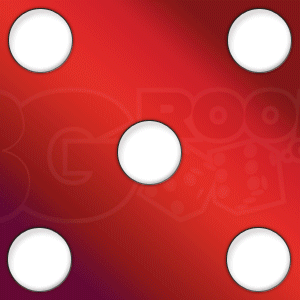The Ultimate Backgammon Terms
Whether it is online backgammon or real-life, backgammon is a game with a language of its own. Your chances of being a great online backgammon player are all the much better if you understand the backgammon terms.
Ace - The number one on the die.
Acey-Deucey - A roll of 1-2 or a variation on regular backgammon.
Action Play - A move which is going to see hits exchanged.
Active Builder - A piece which can be used to build a point.
Advanced Anchor - Making a point in the opponent’s home-board, typically on the 3, 4 or 5 point.
Ahead in the Count - Having a better pip count when it comes down to the race.
Anchor - Having built a point in your opponent's home board.
Back Game - A strategy used when a player who is well behind tries to build as many anchors as possible.
Back Man - The players furthest out piece.
Bar - The point between the two sides of the backgammon board where hit checkers rest.
Bar-Point - The seven-point.
Bear Off - Taking checkers off.
Beaver - Redoubling straight after having accepted a double without giving up possession of the doubling.
Blitz - Trying to hit the blots in your home board.
Block - Points built with the express desire to halt the opposition.
Blot - A single checker which can be hit.
Builder - A checker that is left free with the intention of being used to build a point.
Bury a Checker - Placing a checker in deep your home board that it is basically out of the game.
Catchers - Spreading out your checkers with the hope of trying to hit a blot.
Checker - One of your 15 pieces.
Chouette - A variation of backgammon.
Close a Point - Making a point.
Closed Board - All six points on the home board are made.
Close Out - Close the board while the opponent has a piece on the bar.
Cocked Dice - Dice which don’t lie flat on the board and must be rethrown. Doesn’t occur in online backgammon.
Combination Shot - A blot more than six points away which requires both dice in order to be hit.
Come In - Entering from the bar.
Connectivity - The relative space between all of the checkers.
Consolidate - Decreasing the amount of blots.
Control a Point - Has more than two checkers on the point.
Control the Cube - Has accepted a double and thus have next use of it.
Count - The number needed to bring everyone home.
Crawford Rule - The first game that a player moves within one point of winning the match, the doubling cube will not be in use for the next game.
Deuce - Rolling the number 2.
Direct Hit - When any number from 1 to 6 will result in a hit.
Double - Offering to double the stakes of the game or winning by forfeit if the offer is declined.
Drop - Refusing a double.
Drop Point - The point at which not accepting the double is the right move.
End Game - The part of a game when bearing off commences.
Enter - Having you hit piece come in from the bar.
Forward Game - A style of game where the aim is to get all your pieces home as soon as possible and little attention is paid to defense.
Gammon - Winning the game before your opponent has borne off a single piece.
Heavy Point - A made point which has more than three pieces on it.
Hit - To land on a point where a blot is thus sending it off the board.
Hit and Cover - Making a point and hitting a blot all on the same turn.
Home Board - Where all your pieces have to be before you can begin to bare off.
Lovers' Leap - Rolling 6-5 on the opening roll.
Make a Point - Putting two checkers on the same point to secure it.
On the Bar - When you have been hit your piece will be placed here. You can not do anything until it re-enters the board.
Pip - A unit of distance.
Pip Count - The total amount of pips you are away from winning.
Prime - Consecutive points made.
Prime-vs-Prime - A game where both players have primes.
Raccoon - A redouble which immediately follows a beaver.
Running Game - Trying to win while paying zero to no attention to your opponent.
Slot - Leaving a blot with the hope of covering it up straight after.
Snake Eyes - Rolling 1-1.
Split - Separate two pieces on a point thus making both blots.
Suicide Play - Leaving a blot with the deliberate intention of it being hit.
Tempt - Leave a blot with the hope that it would be hit but only by your opponent yielding his point.
Written by Irene Jones: Backgammon columnist.

